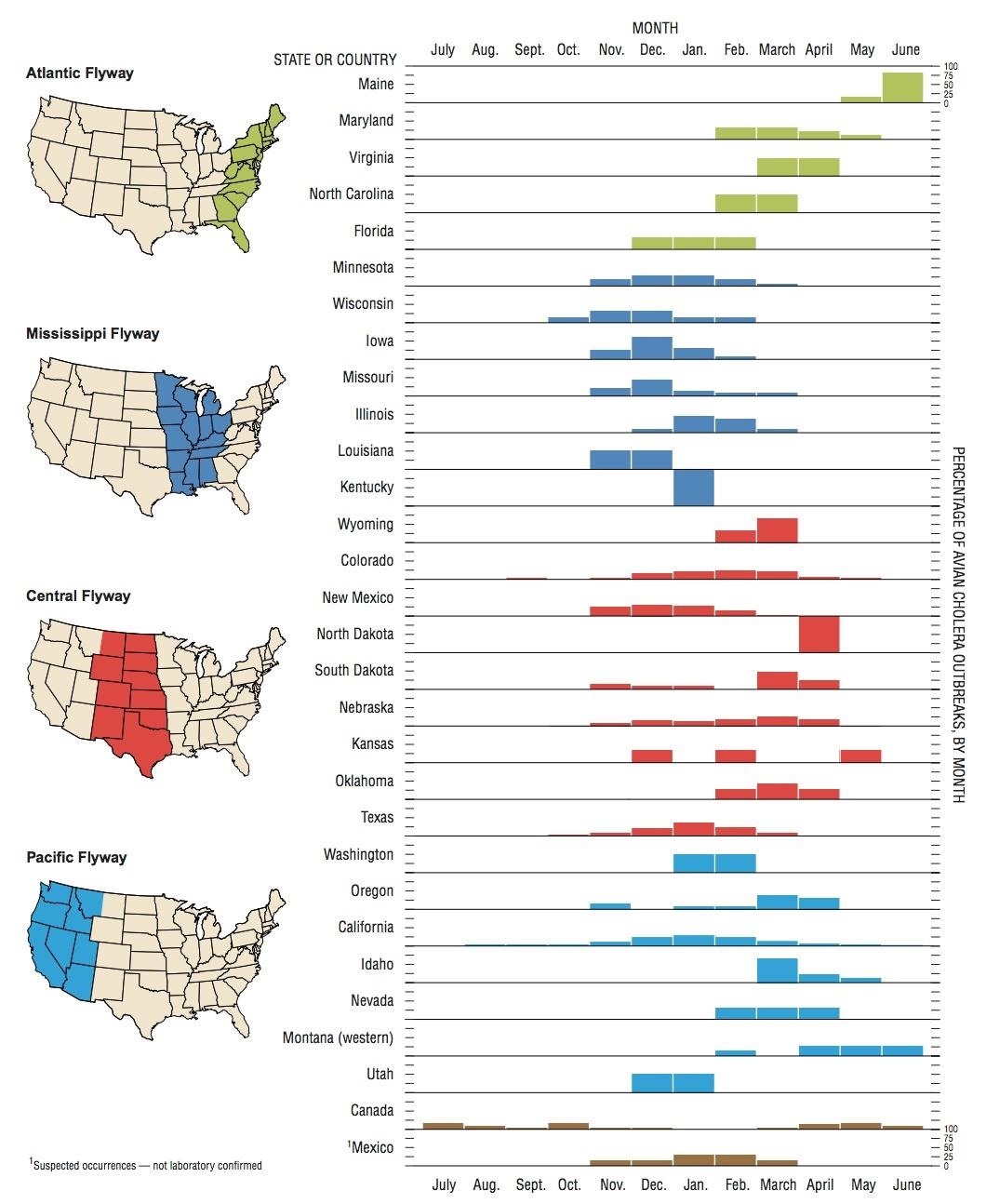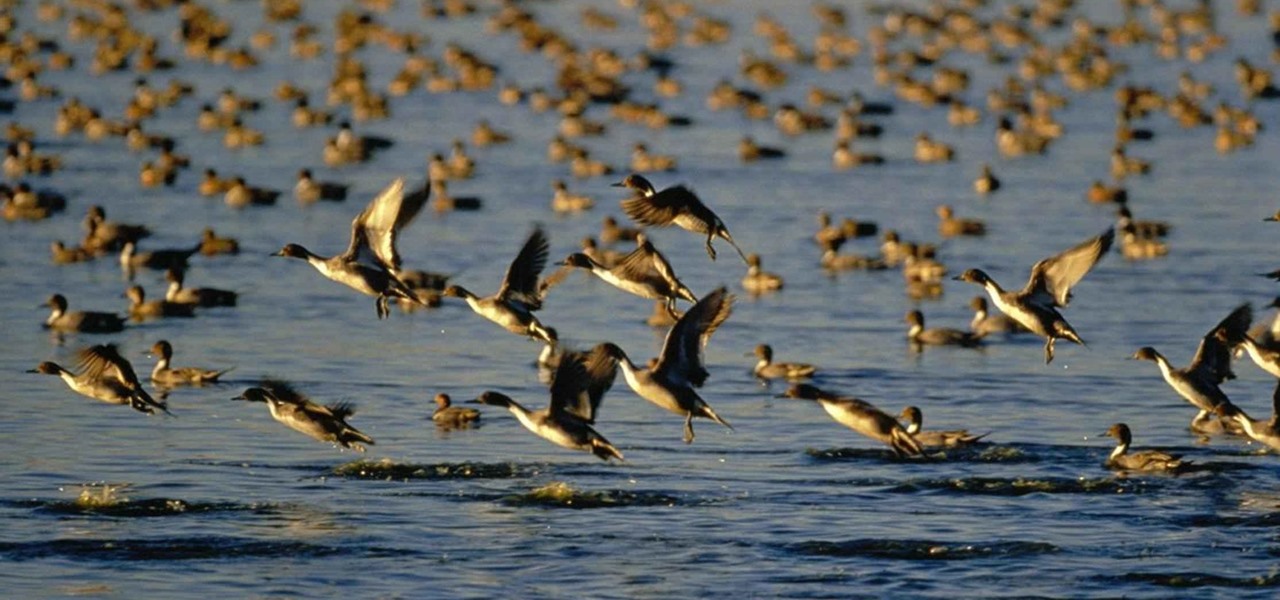Over 6,500 waterfowl—mostly ducks—have died in Canyon County, Idaho, stricken by avian cholera. The outbreak started in February, and before it's over, it may not only be Idaho's largest outbreak, but one of the largest in the country.
Avian cholera is caused by infection with Pasteurella multocida bacteria. The bacteria kills very quickly—often within 6–12 hours—and is highly infectious.
Many types of birds can contract avian cholera, but more waterfowl, coots, crows, and gulls are affected than other types of birds, like songbirds and raptors. Most species of mammals—such as domestic animals, big game, and rodents—can be infected with the organism that causes avian cholera, but bird strains usually kill rabbits and mice, not other mammals.
This is not the same disease as human cholera, caused by the Vibrio cholera bacteria. It shares the name "cholera" because the Greek word khole, meaning "illness from bile," historically was used to describe a severe gastrointestinal disorders of many origins.
Mass die-offs of birds aren't unusual and can happen because of bad weather, disease outbreaks, poisonings, pollution, and even stress. Only 21 other mass outbreaks of avian cholera in the US in the last 20 years have killed over 6,000 birds, which averages to just over one every year.
Predictable Outbreaks
While it may not typically kill off thousands of birds, avian cholera in wild waterfowl follows a fairly predictable seasonal pattern that is closely associated with migration patterns. Unfortunately, because migration occurs in all seasons, outbreaks occur along migratory flyways—in different states, in different months.

Outbreak patterns may be somewhat predictable, but the size of the outbreak is not. It's not until large numbers of birds are found dead in a short time—a mass die off—that an avian cholera outbreak is suspected and may be identified by testing for the bacteria.
Because sick birds die quickly, most live birds may appear healthy, but death can come so fast the birds literally fall from the sky dead. The P. multocida infection kills so quickly because the bacteria release toxins that cause disruptions in blood vessels, leading to hemorrhage on many internal organs, including the heart, liver, and lungs.
When birds are sick, they may appear lethargic, swim in circles, throw their head back between their wings, exhibit erratic flight, or have mucous discharge from their mouth and bloody droppings.
Live P. multocida has been found in water where infected birds died from three weeks to three months later. The organisms can live in soil for up to four months and in decaying bird carcasses for at least three months.
Once an outbreak is recognized, one factor that determines the size of the outbreak is how quickly it's contained.
Infections can be passed by bird-to-bird contact through secretions containing the bacteria, aerosols from splashing of surface waters contaminated with the bacteria, or eating insects that have fed on contaminated bird carcasses. The main route of infection is by ingestion of contaminated food or water—usually caused by infected birds dying in water where other birds are feeding, drinking, and swimming.
Prompt removal of dead birds is the best ways to mitigate outbreaks. The National Wildlife Health Center recommends that carcasses are collected and incinerated. Even the carcass collector needs to be sure to pick birds up head first and place them in plastic bags—preferably double bags—to ensure contaminated fluids don't drop from the bird's mouth and nose to the environment.
Prompt carcass removal also helps to prevent transmission of the infection to scavenging birds and insects or to soil or water. While humans are not at high risk from getting avian cholera from infected birds, sick or dead birds should not be handled without gloves.

Habitat management can also be an effective way to slow the spread of avian cholera. Contaminated waterways may be drained or diluted with excess water to reduce exposure of waterfowl to the bacteria. Whooping cranes have been successfully moved from areas of high infection risk by hazing with aircraft.
Since density of birds increases transmission of the infection, when more waterways thaw and the birds disperse, cholera outbreaks in Idaho tend to diminish and eventually end, according to Tyler Archibald, Fish and Game habitat biologist at Fort Boise Wildlife Management Area.
Hopefully, some good spring thaws and infection control measures by Idaho wildlife officials will help bring this outbreak to an end before many more waterfowl are lost.
Just updated your iPhone? You'll find new emoji, enhanced security, podcast transcripts, Apple Cash virtual numbers, and other useful features. There are even new additions hidden within Safari. Find out what's new and changed on your iPhone with the iOS 17.4 update.




























Be the First to Comment
Share Your Thoughts